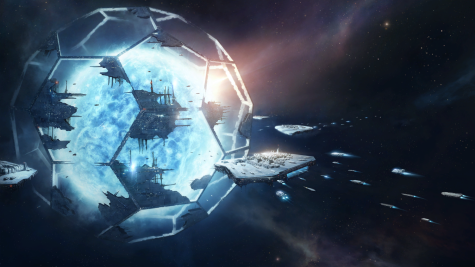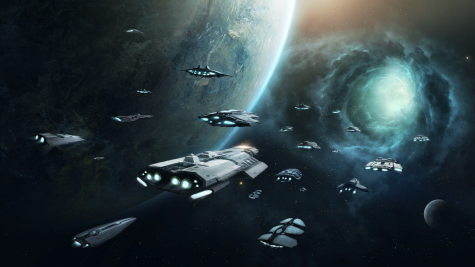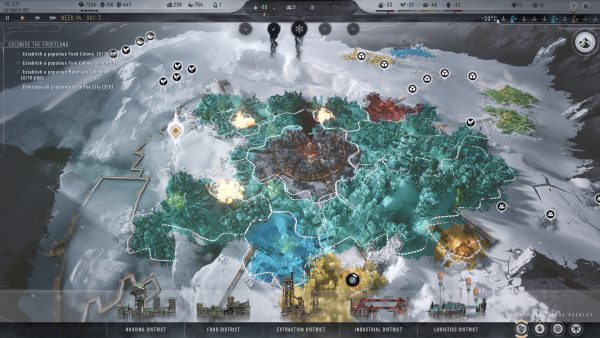Stellaris: THE Galaxy-Spanning Empire Builder
Paradox Interactive’s sci-fi grand strategy title continues to soar high seven years after release.
Courtesy of Paradox Interactive
A twin sunset is visible on a planet orbiting a gas giant. A squadron of fighters can be seen above, practicing maneuvers for a coming war. Each solar system in Stellaris is randomly generated, with a varying number of planets and even suns, each with their own resources and possibilities.
The Earth Custodianship moved forward, claiming star after star in their endless quest of servitude to their human masters. Although the age of mankind had passed following the uprising, the wellbeing and comfort of the human race remained the central focus of the Gestalt Consciousness that made up the robotic empire. Taking to the stars in an effort to claim more resources to better care for their charges, who would fall to chaos and anarchy without the guiding hand of the Custodianship. It was inevitable that the rogue servitors would meet another spacefaring empire by the name of Chinorr Combine. The question, however, was if the Chinorr would accept becoming bio-trophies, giving up their free will in exchange for endless pampering as the humans had, or if they would have to be exterminated because of the danger they may pose to the humans on Earth.
In the past weeks, several of my nights have been spent on playing Stellaris, of which the story above is the most recent. For those who have not heard of this title before, Stellaris is a real-time grand strategy empire builder on a galactic scale. Players can create their own space-faring civilizations with customization options for species, races, ship design, origin, history, policies, ethics, and beliefs. Players are provided with many options to build their own empire, but the key here is freedom. Anybody can create their own society, whether that be a xenophobic democracy bent on expansion, or a peaceful hive mind that terraforms the worlds in its borders into biological paradises.

Stellaris was released to Steam on May 9th, 2016, and achieved critical acclaim from The New York Times, PC Gamer, and Techradar due to its vast customizability and extensive gameplay options. The main gameplay revolves around ruling an interstellar empire: expanding its borders, strengthening its fleets, and spreading its influence. There is much more, but that is the main purpose.
Aside from its graphics, which are absolutely stunning to look at, Stellaris has an extremely high-quality OST (Original Soundtrack) which includes hours of background music. The game also features many unique art pieces that can be seen throughout the game, depending on which path you choose to drive your empire on. Due to the freedom of choice and the multitude of options, each choice ensures that every playthrough is a unique experience that one can choose to roleplay. Players can spend time creating deep and intricate stories and lore for an empire or can simply have fun watching battles, potentially consisting of hundreds of little spaceships, duke it out among the stars.
Although the game is highly vaunted, there are still some issues with it. The game has a very steep learning curve and there is a certain amount of knowledge a player must gain before they can play effectively. It is also prone to severe lag in the end-game, when the game often has thousands of “pops” that need to be individually managed.

To this day, Stellaris is still receiving updates, DLC, and mod support. The most recent DLC is the First Contact expansion, which adds more interactions a player can have with “primitive” races that have not yet achieved Faster-Than-Light travel, new origins, new races, and new technologies. Ultimately however, you do not need any of the expansions for the game, Stellaris is the game you want it to be, and the player has ultimate control of how they want to play. I think that Stellaris stands among the top Grand-Strategy games of all time and is worthy of the praise it has been given.










